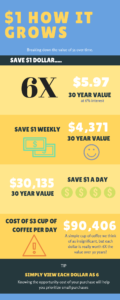Car Leasing Part 1 of 3
First, I don’t advocate leasing a car. It is not the best way to save, the money you spend on the car does nothing for you, and lastly, most people pay more on leases then buying.
So with that said, there are some times when a lease could make sense. In my case, I have two cars paid for already but I wanted an electric car to reduce the gas and taxes I was paying at the Pump here in California (at the time almost $5 per gallon).
Between the State and Federal tax rebates I was looking at over $10K in credits plus some local energy rebates, a carpool sticker, and parking benefits.
The way the tax rebate worked is that you could either 1) Take the credit against your tax return at the end of the year or 2) take an instant cap cost reduction on a new car if you leased the car.
There was no question what I would do, in option 1, the way the credit worked is that there were cases where you could get a reduced credit depending on how your tax return worked out whereas in case two you were guaranteed the full credit immediately.
The car I bought was a Volkswagon eGolf. After I factored in the rebates, negotiated the lease cost, and negotiated the car price, I had a car that ended up virtually paying for itself through the savings in gas.
However, the only reason it worked is that over the two-year lease my total interest (or interest equivalent) was under $200 and the rebate went directly to the cap cost and not the residual. A very subtle point and one where most consumers lose.
I will post the exact details of the lease terms in a future update so that you can see how I negotiated the deal and why it worked out.
With that said, the first step in knowing how to lease is understanding the terminology. Here are some definitions I wrote pulled from my other blog findbettervalue.com.
In Part 2, I will review how you put these terms to use. In part three, I will give you the way to know if your deal is good or not.
If you have lease questions, leave them in the comments below.
A.P.R.
APR stands for Annual Percentage Rate. This is the yearly interest you will pay on the principle balance of your loan.
Capitalized Cost (Gross)
Pay attention to this one. This is the price you negotiate for the car before any rebates, incentives, down payments, or trade in credits. When you are sitting with the dealer and you agree that they will sell you the car for $25,000, you should see that number labeled as Gross Capitalized Cost in the contract.
Cap Cost Reductions
These are things applied to your Gross Cap Cost to reduce the dollar amount. This is where you should see incentives, rebates, trade in values, and down payments.
Capitalized Cost (adjusted)
This is the final cost of the car after you apply your total adjustments from your cap cost reductions. In you agree that the new car is $25,000 and you put down $1,000, have a trade that is worth $2,000, and have a rebate of $1,500, then your Adjusted Cap Cost is $25,000 – $1,000 – $2,000 – $1,500 = $20,500. This should be the amount used to determine your financing before taxes and registration fees.
Depreciation
This is an accounting term that means the loss of value of an asset. A simple example, you buy a car for $25,000 and three years later it is worth $15,000. Your depreciation is equal to $10,000. In a lease, you want to find a car that holds it value longer since you are paying for this depreciation during your lease term.
Money Factor (MF):
AKA Lease Factor. The money factor or lease factor is the number used in calculating how much money you will pay the bank to lease your car. It is essentially interest. A short cut to convert Money Factor to approximate interest is multiply by 2,400. A sample money factor would be .00211 or about 5% interest. Be careful, sometimes you can be quoted numbers such as 2.11 to fool you into thinking you are getting a low interest rate. If this is the case multiply by 2.4.
Rent Charge
This is the total interest you are paying on a lease. If somehow you don’t catch a poor Money Factor, look at this value in the contract. Does it make sense? If you are leasing a car for $20,000 over three years and this amount says $10,000 you better run for the hills.
To give you an idea the total interest on a $25,000 loan would be:
24-months 36-months 48-monts
2% $500 $1,000 $1,500
4% $1,000 $2,000 $3,000
6% $1,500 $3,000 $4,500
Residual Value
Residual Value is the wholesale amount the car is estimated to be worth at the end of the lease term. This is an important factor, the higher this number the lower your lease payment will be. In a lease you are paying the estimated depreciation of the car, so the more the car loses its value the higher your payment will be.
Residual Value is also a place where dealers can add in extra padding due to the fact that it is not easy information to find online. Most of the bank residual values are confidential or obtained via pay services. However, you can estimate a fare residual value by looking at the same car as old as the term you are looking at in the lease and determine the average asking price in the market. This is not exact but can give you an idea as to what the value should be. The other way is to search online for your car followed by residual.
Total of Base Payments
This is the amount you are going to pay over the term of the lease. It includes you rent charge and depreciation fee. This is usually what your monthly payments multiplied by your term will equal. This is another place you can look to see if you deal has gone South. Look at this amount plus the residual value the dealer has given you and then add in the rebates, incentives, down payments, and trade in allowance. That is your total cost of the car. Does it seem right? If you agreed on $25,000 for the car, but all after you added all the components you come to $35,000, then something is not right. How did you end up $10,000 above the price you negotiated. Ideally, the total cost you arrive to should be you car price plus interest, taxes, and registration. Remember on $25,000 financed, interest for 36-months at 4% is only $2,000.






